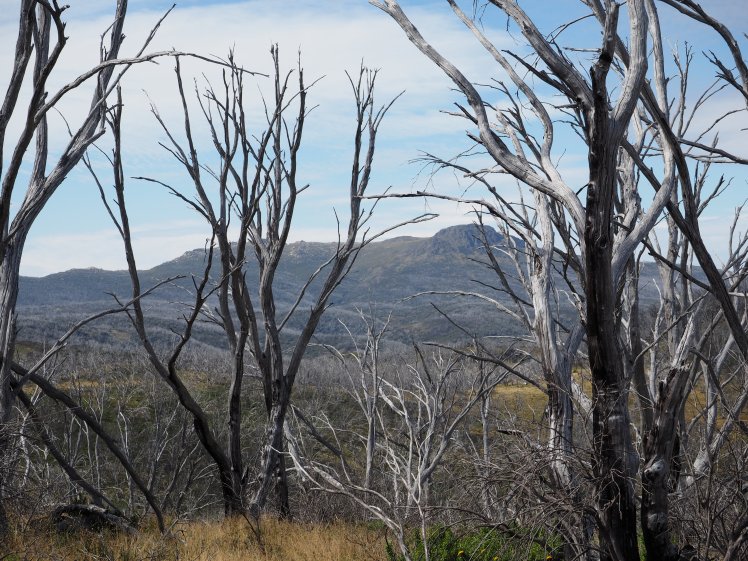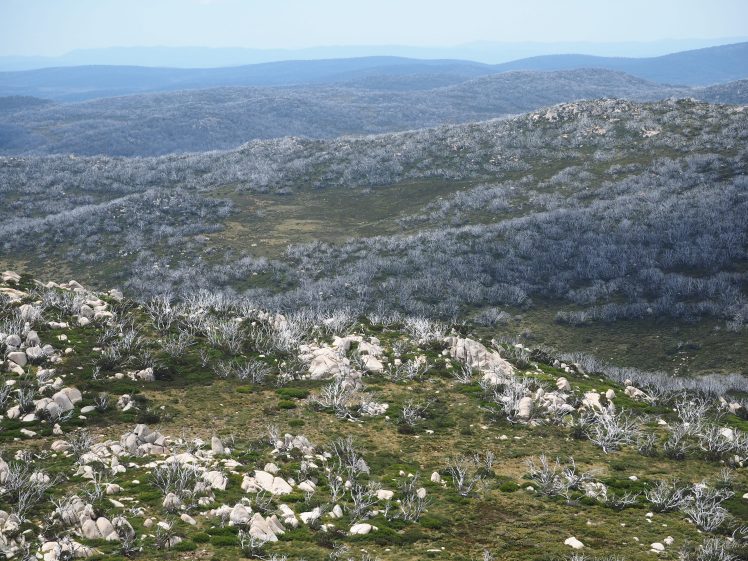
And down by Kosciusko, where the pine-clad ridges raise,
Their torn and rugged battlements on high,
Where the air is clear as crystal, and the white stars fairly blaze
At midnight in the cold and frosty sky.
-The man from Snowy River, A.B “Banjo” Patterson.
TO DESCRIBE a place such as this – It is a rough, untamed land, which has been worked in places by the bitter cold, as much as it has by the harsh bite of the brumies hoof. It has this incredible openness to it, an almost empty openness that encourages states of peaceful insignificance. Walking here, I was as a speck of dust, pushed onwards by a relentless arctic wind, an observer to an ancient story of a country visited only in poetry and dreams. But out in this wilderness, I felt more awake and more alive than ever. The scent of every flower washed over me, every crunch of motion over fibrous grass vibrated through my limbs, and the outline of every mountain was crisp and clear and defined, as if painted in perfect, dark ink strokes.
Jagungal, I think I’ve fallen in love with you.
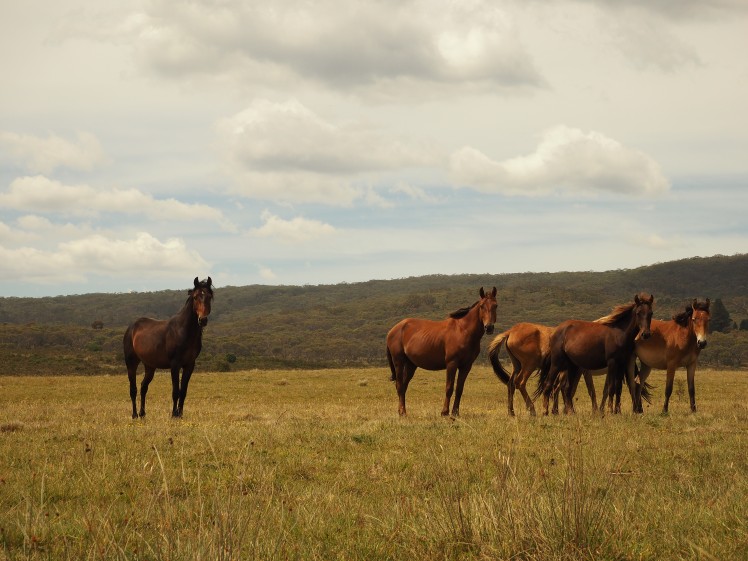
My extended weekend began as it ended. In a car. After work one afternoon, I emerged from the Wolgan valley and pointed my wheels to the south, following a seemingly endless country road. Golden grasslands folded into more golden grasslands, and the occasional town appeared as abruptly as it vanished. That night, I camped in a rest stop outside of Coma and coveted a clear, moonless sky and the bright, colourful band of stars that form the Milky Way. In the darkness I could almost pretend that I was still at home, although this landscape lacked the natural frame of sandstone cliffs, which obscure many of the low-lying stars that I could now perceive on the horizon.
I spent the first two days with a couple of cowboys, and played David Attenborough with the wild brumies. Having only ever spotted the fantastic beasts (the horses, that is) at a distance several years back, I was surprised at how approachable these animals were. I was able to lay in the grass for an hour or so, snapping pictures of a foal and its mother, until their stallion got restless and told me to move on.
I stopped in at Tantangara dam for a quick dip. This man-made dam forms a part of the Snowy Mountains Hydro-electric Scheme and stretches out all blue lagoon like between the rises of hills to the east and the west. There were one or two cars stationed along the 460 square kilometre catchment area, but apart from this slight occupation, I had the shoreline to myself.
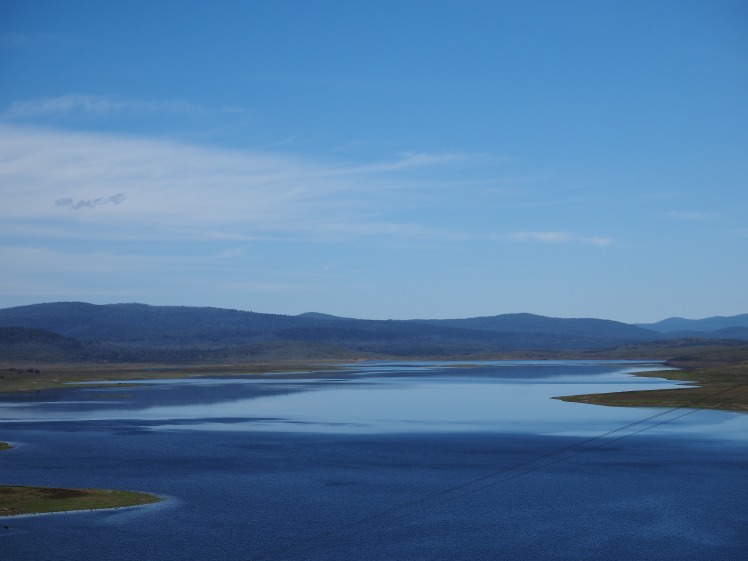
By the end of day two, however, I was starting to feel a familiar impatience. It was time to desert my trusty Subaru Forester for the simplicity of a backpack and shoes. My mind firmly set, I putted down a twisting road towards the Jagungal wilderness.

I pulled into the Round Mountain car park at around 5pm and was on the trail by 5:20pm. Stepping around the solid iron gate, I began the descent through the skeletal remains of grey gums caught in the 2003 fires. From this elevation, I could perceive the rolling arch of Mount Jagungal and the stretch of blue hills – distant mountains painted in watercolour on the horizon.
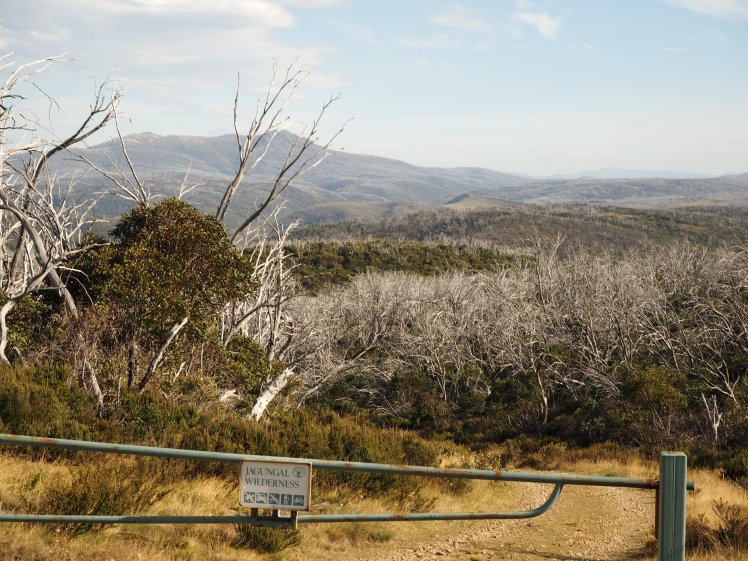
Twenty minutes along the track, I came to a small red and silver tinned structure. Round Mountain hut was to become my introduction to the beautiful little habitations that spot the hills and plains of the Snowy Mountains region. I spent a short while nosing around in the dim interior of the hut. Its bent timber beams and stony fireplace gave it charm, however it was dark and had a musty smell attached to it, and I was happy with my decision to press on to another camp site.
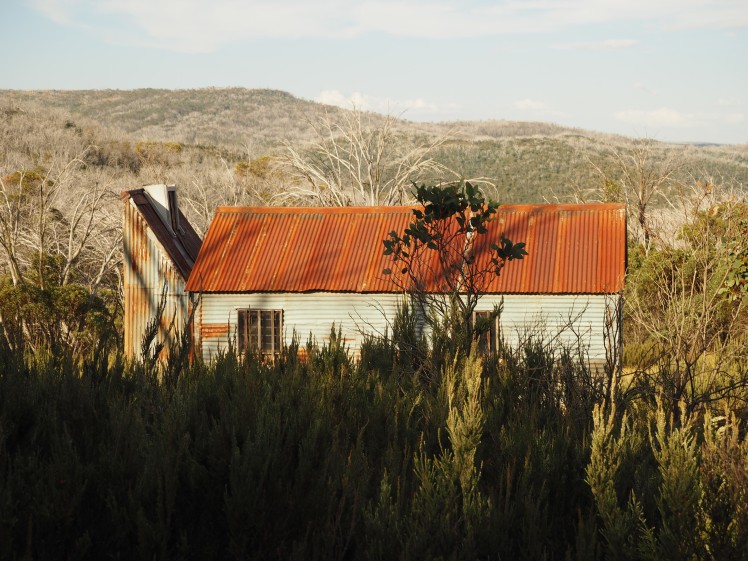
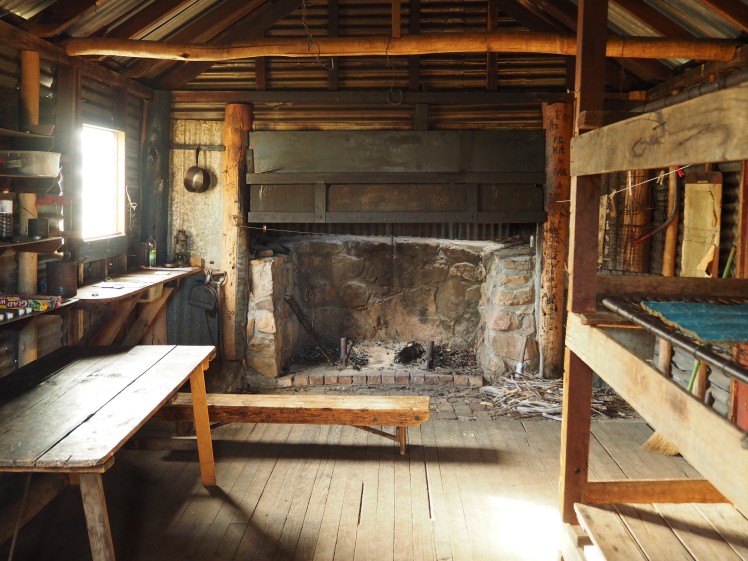

I completed the final part of the descent down to the Tumut river under a falling sun. The light it cast threw a spectacular golden-brown hue upon the valley, and shadows rose with a viscous, black movement behind the hills and bushes and trees.
I crossed the Tumut River in bare feet, goosebumps appearing on my legs as soon as my toes met the cold of the alpine water, and prepared my muscles for the climb up to Farm Ridge. All on fire trail, it was a fairly easy ascent and atop I was rewarded with a spectacular sunset. The sky changed – even as I watched – from blue to white and yellow, to pink and orange and red and then back to blue and finally to black. The symphony of a sunset is always an original composition and here I enjoyed a private concerto.
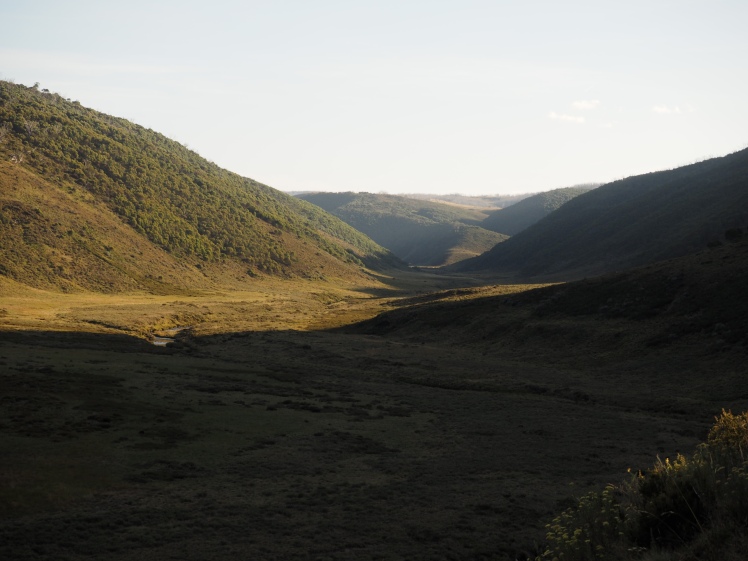


Almost as soon as the sky faded to black, a white glow appeared on the far horizon. Moments later, a full moon burst above the mountains; it was a huge, bulbous orange thing and it glowed so fiercely that it was as if a second sun had risen. I continued along the ridge-line trail powered by its natural light and didn’t reach for my torch until I found myself in the depths of a thickly treed forest. Off Farm ridge, the track met with Grey Mare fire trail, which I followed in the dark until I perceived the faint outline of O’Keefes hut. It was now well past 10 pm and I was ready to make camp.
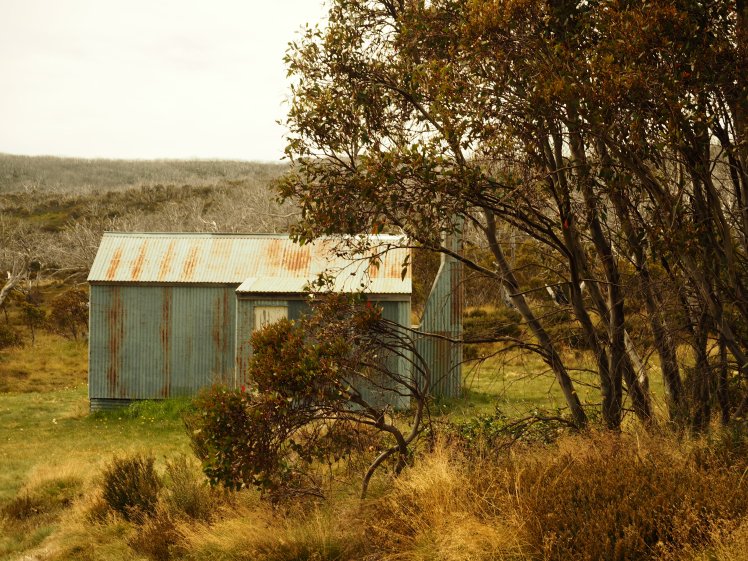
O’Keefe’s hut is wonderfully well-maintained. It is clean and homely, and plastered with old newspaper clippings, yellowed with age. Here, I happily treated myself to a leisurely breakfast and set out for Mount Jagungal a little after 12 pm. Despite the incredible pleasure my surroundings brought me, I was feeling drained. I was relieved that I had planned such an moderate introduction to the area, but the climb up Mount Jagungal – with a heavy pack – would still prove a challenge in my current condition.
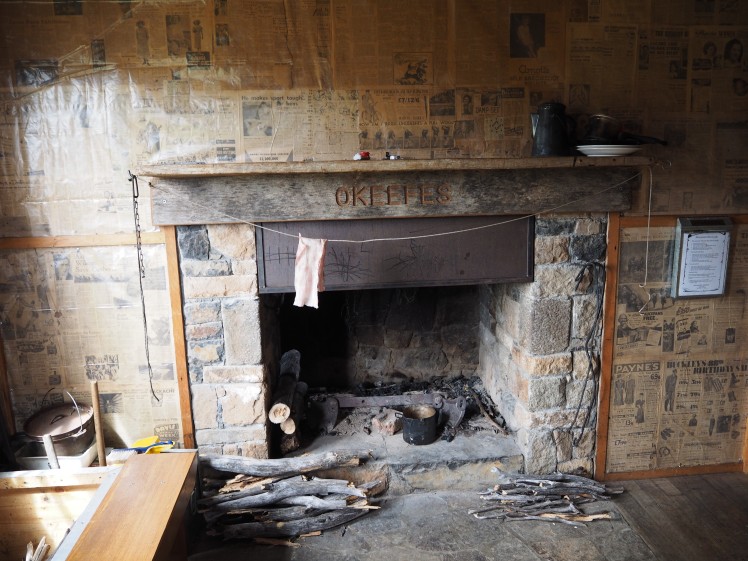
I battled up a rough ridge line, to the north-east of Mount Jagungal. I purposely picked a heavily vegetated, non-obvious route, to get a feel for offtrack walking in these parts. The low lying heaths were deceptively thick; knee to hip height, in many places it was like wading through honey.
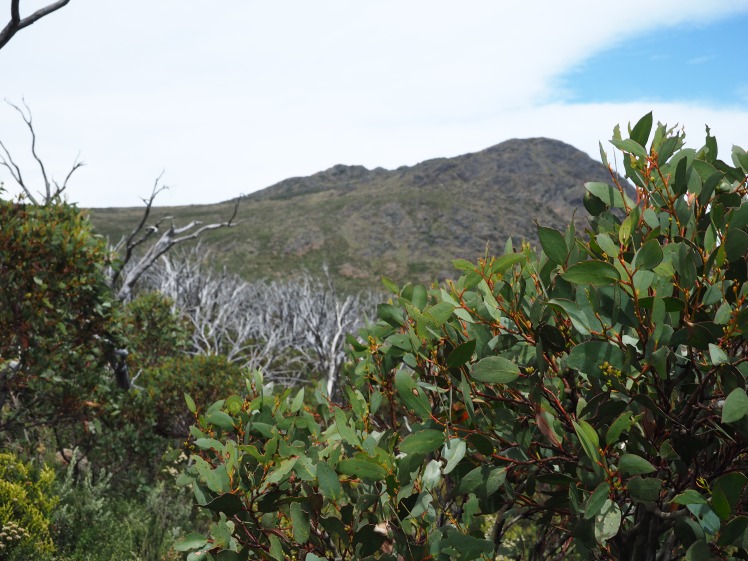
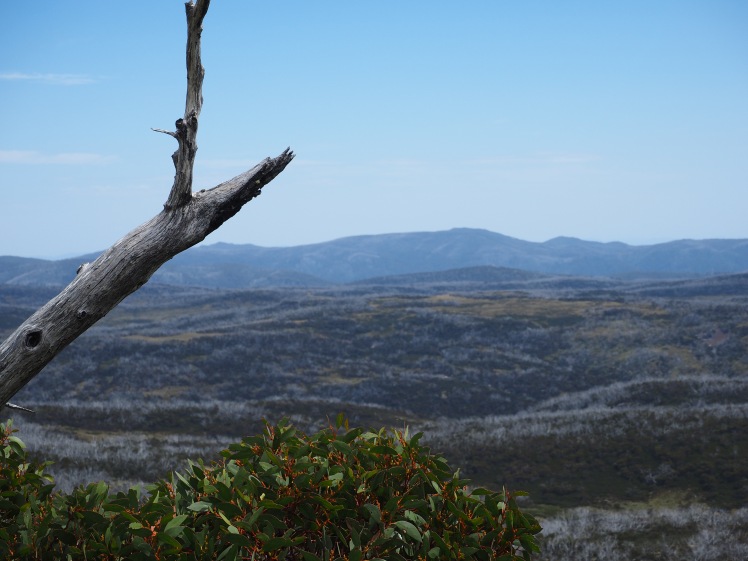
Further up the ridge, my route took me across a series of rocky mounds. These rough, white stones looked like broken teeth, sprouting from the green of the heath. They were enjoyable to navigate, even with a big backpack, and I soon found myself on a flat, grassy saddle, just below the summit of Jagungal.
The view up here was awesome. The hills stretched out before me, peppered with the white dusting of leafless grey gums, and in the distance the blue of the sky kissed the blue of the far mountains and hills, which were like a huge rolling ocean, frozen in time. Once atop Jagungal, the arctic breath of the mountain struck me. Although a mere hill at 2,061 m above sea level, in comparison to the mountainous alps (e.g. Everest sits as ~8,848 m), I still felt tall standing on its slight precipice.



I dropped off the western side of Jagungal, following the line of least resistance, and very quickly found myself back on the fire trail I had left earlier that day. I followed the well defined track until it met with the Round Mountain fire trail and took a north bearing to Derschkos hut. It was a short walk, punctuated with a spectacular visit by a hovering hawk, which sunk and rose in the sky with ease and played with invisible air currents as it hunted for its prey. I had noticed many kinds of predator scat along the road way, and more than a few among them were likely produced by the predatory bird.
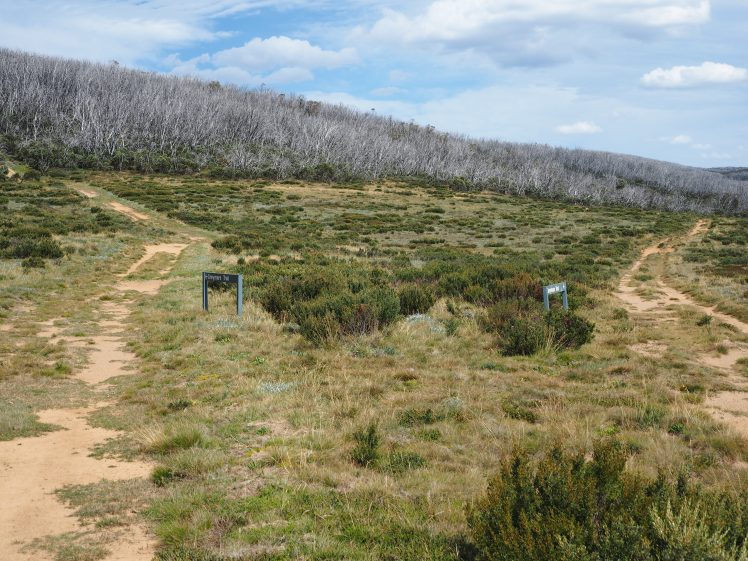
I almost missed Derschkos hut. It was tucked away, behind a small rise and one had to look over their left shoulder to spot it, if coming from the south. Once in your frame of vision, however, it stood out like black on white. A neat-and-tidy cream slatted structure nestled in low lying scrub. Into the early evening, the wind had picked up, but as I entered the building and shut the door, all sounds ceased, as if smothered by a vacuum. Inside, it smelt like new paint and ash. A quick skim over the log book informed me that the hut had only just been restored, and with its fresh layer of paint and spotless interior, it was looking very smart indeed.
Just before nightfall I discovered that I would not be sleeping alone, and muffled voices – which I first thought imagined – revealed two young men who had set out from the Round Mountain car park earlier today. After brief conversation they identified themselves as members of the UNSW outdoors club, although part of a newer generation that I was yet to encounter. We shared a few stories, but I was tired and succumbed to sleep pretty early on.

The next morning I awoke early and departed before the boys had risen. I paced along the fire trail with a light step, glancing occasionally back at the shadow of Jagungal and contemplating life as one generally does when walking alone in a place such as this. Nearly back at the car park, I happened across a group of contractors who were out on the hunt for Orange Hawkweed (Hieracium aurantiacum). Hawkweed is on the Alert list for Environmental weeds, and is currently targeted by community involvement-based programs and detector dogs, which have been trained specifically to locate the noxious weed.
One last glance back through the spidery trees, and I was where I had started, only two sleeps before. I packed myself into the car and turned onto the road to civilization. I had nearly 8 hrs of driving to look forward to that afternoon, but I saw it as 8hrs I could spend reflecting upon and pining for the beautiful wilderness I had just left behind. And, of course, it was time I could spend planing my next visit to this special piece of country.
